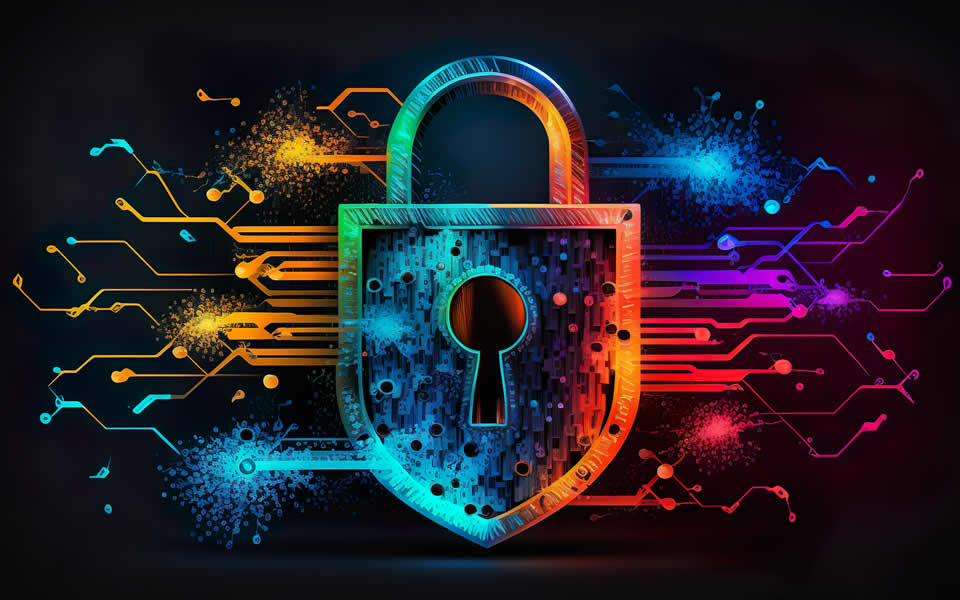Top 6 Enterprise Cybersecurity Challenges for 2024
By John Rostern, Vice President, Cybersecurity & Digital Forensics, Marcum Technology
Businesses continue to face a myriad of cybersecurity challenges that demand heightened attention and proactive measures. The threat landscape is constantly evolving, with cyber actors becoming more sophisticated, finding novel ways to exploit vulnerabilities, and leveraging advanced technologies to exploit vulnerabilities in software and hardware.
The rise of technology has given us access to more data than ever before, but with greater convenience comes an increased risk of cyberattacks and other security threats. Enterprises need to stay vigilant and continuously adapt their cybersecurity strategies to counter these threats effectively. This article decodes the top six enterprise cybersecurity threats for 2024 and gives tips for developing robust solutions to combat these threats.
TOP 6 ENTERPRISE CYBERSECURITY RISKS
1. SOCIAL ENGINEERING ATTACKS
Social engineering attacks are a common and effective method cybercriminals use to manipulate people into revealing sensitive information that can compromise an organization’s security. One type of social engineering attack is pretexting, which involves creating a fictional scenario or identity to gain the victim’s trust, often through phone calls or emails. Another is spear phishing, a targeted form of phishing where cybercriminals send personalized and convincing messages to trick individuals into revealing sensitive information.
These attacks can have detrimental effects on businesses. For example, by tricking employees into revealing their login credentials, cybercriminals can gain unauthorized access to company systems and steal sensitive data. This can lead to financial losses, damage to the company’s reputation, and potentially costly legal consequences.
To protect against social engineering attacks, organizations should educate their employees about the different types of attacks and the importance of being vigilant. Implementing multi-factor authentication, maintaining up-to-date security software, and regularly reviewing and updating security protocols are vital in preventing social engineering attacks.
2. MALWARE AND RANSOMWARE ATTACKS
Malicious software, or malware, is designed to harm or exploit a system or network. Ransomware malware that encrypts a victim’s files and demands payment in exchange for the decryption key. Ransomware has become an increasingly popular method cybercriminals use to target organizations. The healthcare sector is often targeted due to the critical nature of patient data and the urgency of their operations.

The financial consequences of these attacks can be devastating. Businesses may face the direct costs of ransom payments and indirect costs associated with operational disruptions and loss of productivity. In addition, there may be regulatory fines and legal liabilities if customer or patient data is compromised.
To prevent malware and ransomware attacks, businesses can implement robust endpoint security solutions, such as antivirus and anti-malware software, and regularly update their systems with the latest security patches. Organizations should periodically back up their data and test their backups to ensure retrieval is possible in case of an attack. Implementing behavior-based detection systems can also help identify and block suspicious activities, preventing malware and ransomware attacks.
3. BUSINESS EMAIL COMPROMISE SCAMS
Business Email Compromise (BEC) scams have become a significant organizational threat with devastating financial consequences. In a BEC scam, cybercriminals gain access to an employee’s email account through various means, such as phishing or social engineering tactics. Once inside, they carefully observe and monitor email communication to identify opportunities to deceive employees into making fraudulent payments.
The attackers often disguise themselves as trusted individuals, such as vendors or clients, using spoofed or compromised email accounts to send convincing requests for fund transfers. These emails are intricately crafted to appear legitimate, often mimicking the tone and language of regular business correspondence. The financial damage caused by BEC scams can be significant, sometimes ranging from thousands to millions of dollars, in a single incident.
Detecting and recovering from BEC scams poses immense challenges. Unlike other cybersecurity threats, BEC scams often don’t involve malware or suspicious network activity, making them difficult to detect using traditional security measures. By exploiting human vulnerabilities and manipulating trust, attackers bypass security defenses. Additionally, recovering stolen funds can be incredibly challenging, as fraudulent transactions are often irreversible or quickly moved to multiple accounts, making it difficult to trace and retrieve the funds.
To combat BEC scams, organizations must implement a multi-layered approach that includes strong email security measures, such as email authentication protocols, advanced threat detection solutions, and an awareness program to foster a culture of suspicion and verification when it comes to financial transactions. Regularly reviewing and updating internal payment authorization procedures can help prevent fraudulent transfers.
4. CLOUD SECURITY CONCERNS
Cloud security is a prominent concern for enterprises as it protects sensitive data stored, processed, and transmitted in cloud computing environments. Cybercriminals can exploit various vulnerabilities in cloud security to gain unauthorized access and compromise the integrity and confidentiality of data.
One specific risk is account hijacking, where attackers gain unauthorized access to user accounts. This can be achieved through various means, such as stealing login credentials through phishing attacks or exploiting weak passwords. Once an account is hijacked, attackers can access and manipulate data, impersonate legitimate users, or launch further attacks within the cloud environment.
Another concern is misconfigured cloud settings. Improperly configured security controls and access permissions can expose sensitive data and resources to unauthorized individuals. Attackers can exploit these misconfigurations to gain privileges and perform malicious activities, such as data leaks or unauthorized modifications.
Insecure Application Programming Interfaces (APIs) also pose a significant risk in cloud security. APIs act as interfaces between different software applications and cloud services. If APIs are not adequately secured, attackers can exploit vulnerabilities in these interfaces to gain unauthorized access, manipulate data, or launch attacks on cloud infrastructure.
Regular vulnerability assessments and penetration testing can help identify and mitigate weaknesses in cloud security. Additionally, ongoing monitoring and incident response plans are crucial for detecting and responding to any security breaches in the cloud environment.
5. MOBILE DEVICE RISKS
In 2023, the security concerns related to mobile devices have become more prominent, primarily due to the increase in remote work and the widespread implementation of bring-your-own-device (BYOD) policies. These changes have created new challenges for enterprise cybersecurity teams.
One significant issue is the rise in security incidents involving malicious mobile applications downloaded by employees. With BYOD policies in place, employees often download various applications onto their personal devices, some of which may contain malware or vulnerabilities. These malicious apps can compromise sensitive data, install spyware, or enable unauthorized access to corporate networks.
Additionally, cybercriminals are increasingly targeting Mobile Device Management (MDM) systems. Organizations utilize MDM solutions to manage and secure mobile devices used by their employees. If an MDM system is compromised, cybercriminals can gain control over multiple devices, potentially leading to data breaches, unauthorized access, or the installation of malicious software.
Organizations should implement strong mobile device security measures to mitigate these risks, including robust device management protocols, regular security updates, mobile antivirus software, and secure VPN connections.
6. SAFEGUARDING SENSITIVE FINANCIAL & TAX INFORMATION
It is critical to safeguard sensitive financial and tax-related information, especially during tax season, as cyber threats like tax fraud evolve. Businesses can employ a multi-pronged approach to mitigate these risks. First, robust password security and the implementation of multi-factor authentication are vital to protect sensitive data from unauthorized access. Filing taxes promptly is essential, as delayed filings can provide opportunities for malicious actors to impersonate you. Vigilance against scam emails, texts, and phone calls is imperative, as cybercriminals frequently pose as tax authorities to trick individuals into divulging personal information.
Furthermore, ensuring the security of computers and devices by installing antivirus software, firewalls, and other protective measures is fundamental to preventing cyberattacks. Employee cybersecurity training and data privacy verification procedures should be in place to shield against tax fraud schemes and other forms of cybercrime. Additionally, purchasing an insurance policy that covers losses from cybercrime or fraud can provide added protection.
By diligently following these guidelines, businesses can significantly reduce their vulnerability to cyber threats during tax time and beyond. Staying vigilant and proactive is key to safeguarding sensitive information in an ever-evolving digital landscape.
FINDING AN INNOVATIVE CYBERSECURITY PARTNER
As the cybersecurity threat landscape develops, businesses must be prepared to face new and emerging threats. Marcum Technology can help companies create a proactive approach to guard against cybersecurity risks. By partnering with experts who can provide comprehensive cybersecurity solutions, companies can remain agile in the face of cyber threats.
Marcum Technology’s experienced cybersecurity and digital forensic specialists can help businesses plan for and respond to the latest cybersecurity and digital threats. We can also help enterprises investigate incidents and ensure their security strategies and programs are effective.
By working with Marcum Technology, businesses can create a reliable cybersecurity strategy that addresses the top enterprise cybersecurity threats and mitigates the risks of cyberattacks–protecting their data, reputation, and bottom line.





















